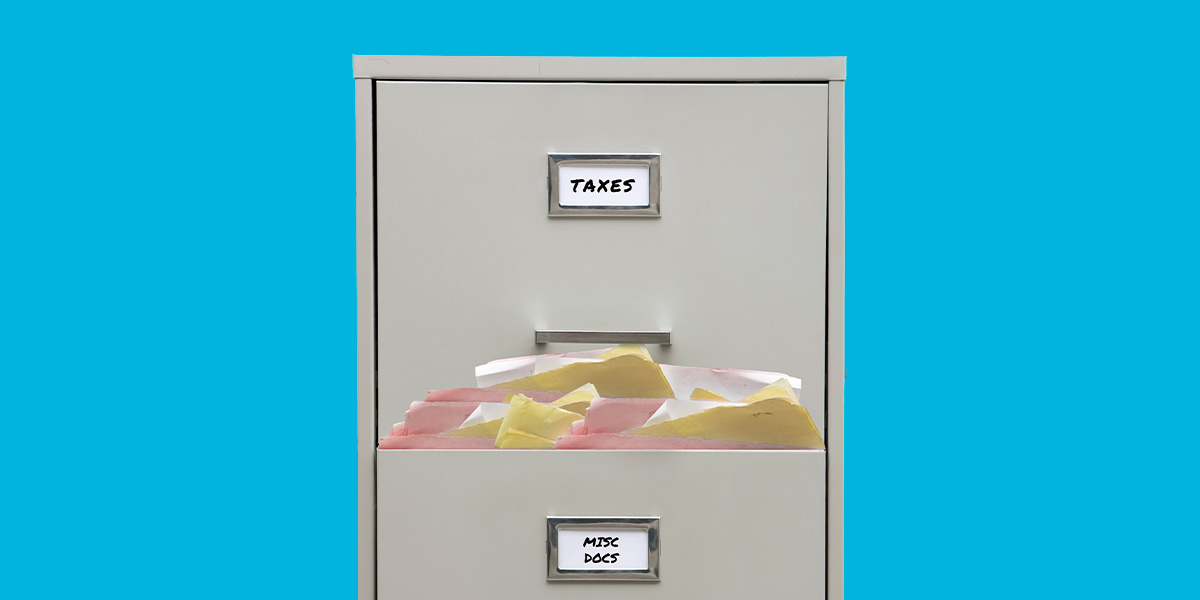-
Personal Banking -
Insights
Creating a Family Budget: What You Need to Know
Is sticking to a budget tough for you? You're not alone. In fact, of the three-quarters of Americans who have a family budget, 84% admit to going over it at some point.
Creating a family budget and sticking to that budget may seem complicated, but it doesn't have to be. By breaking down the process into manageable steps, you can get a better handle on your family's finances.
Here's a good start on what you need to know about creating a family budget and how to use that budget to meet your financial goals.
Why Are Family Budgets Important?
When it comes to financial planning, a family budget plays a significant role in shaping the financial well-being of your household. Family budgeting provides a structured framework that offers a detailed overview of your family's income, expenses and savings.
A well-structured family budget can help you manage your day-to-day expenses and serves as a tool to help achieve long-term financial goals. It allows you to set aside funds for emergencies, investments, education, vacations and major purchases while also ensuring your needs are met.
However, for a budget to work, it's essential to make sure your whole family is involved and on the same page. This will encourage communication and collaboration while potentially helping you avoid uncomfortable disagreements between family members.
Work with your partner to establish clear financial goals and priorities. Open and honest communication is key in making sure that both of you have a shared understanding of the budget's objectives and how you plan to achieve them.
How to Create a Family Budget
Creating a family budget is a smart move if you're ready to take charge of your finances. By following a few steps, you can track your spending, identify potential areas to cut costs and potentially save money.
1. Involve the Whole Family
Managing your family's finances is more than just crunching numbers. It is a collaborative effort that requires teamwork. While it might seem intimidating at first, don't be afraid of the money talk.
By involving all members of the family in the budgeting process, you can work together to set and work towards shared financial goals. These goals could include saving up for a vacation, a new family car or a college fund. When each family member contributes their input, your goals become more meaningful, and everyone feels a sense of ownership in achieving them.
Budgeting together also provides an opportunity for teaching financial literacy skills to children and teenagers. Teaching them about budgeting and making them aware of the family budget can help your kids understand the concept of money, expenses and the importance of making informed spending decisions.
2. Discuss the Difference in Wants VS Needs
In today's modern society, the line between wants and needs isn't always clear. To break it down, needs are things that are essential for your survival and well-being, like food, shelter and clothes. On the other hand, wants are things you'd like to have, such as entertainment, travel and gym memberships.
Discussing the differences between wants and needs with your family is essential in helping your budget succeed. Explaining this concept to your children and partner lays the groundwork for responsible spending and focusing on what's important.
Remember that what may be a want for you may be a need for someone else in your family. Make sure everyone's voice is heard and accommodated as much as possible, so that they feel included and involved in making the family budget.
3. Establish a Goal Together
Establishing money goals together creates a roadmap for the entire family. It fosters collaboration and ensures goals are aligned with everyone, including your children.
These goals can be big or small. They might include saving for a vacation, paying off credit cards or preparing for the future, like college or retirement. When you involve the whole family in your budgeting goals, everyone gains a better understanding of money and learns how to make smarter financial decisions.
Life can be unpredictable, and sometimes things don't go as planned. That's when your roadmap comes in handy. By setting goals together, your family can become better at handling unexpected expenses and finding solutions.
4. Calculate Your Family's Income
Creating a budget begins with understanding how much money flows into your household. Take a close look at all sources of income, such as salaries, wages, freelance work, interest, bonuses and any other money that finds its way into your bank account.
Remember to consider both regular and irregular income streams. Once you've gathered this data, calculate the sum of all of your income sources. This total will be the foundation you use to determine how you will distribute your money across your budget.
5. Calculate Your Family's Expenses
When you've determined how much money is coming into your household, it's time to calculate your family's expenses. Begin by categorizing your expenses into categories. These categories could include housing, utilities, transportation, groceries, entertainment and savings.
Not only should you check the spending in your bank account, but you should also take a look at your credit cards. Managing your credit card balance can help prevent financial surprises down the line.
Pay special attention to discretionary spending or what you might consider “fun" money. While enjoyable, these expenses might impact your larger financial objectives. If necessary, consider scaling back or adjusting these costs to help keep you and your family on track.
6. Begin to Track Spending.
One way to stick to your budget is to track spending. Tracking your spending can help you see where exactly your money is going.
To budget family spending, consider these methods:
- Try User-Friendly Apps: Consider downloading budgeting apps like YNAB (You Need A Budget) and Goodbudget. These apps can simplify budgeting and give you real-time updates on your spending right at your fingertips.
- Go Classic with Pen and Paper: If you'd prefer a more tangible method of recording your spending, you can always use the classic pen-and-paper method. Keep a small notebook or a journal to jot down your expenses.
- Use Spreadsheets: Tools like Excel are another option if you're tech-savvy and enjoy organizing data. Create your own budget spreadsheet or find templates online. You can customize categories and deep dive into your spending patterns.
No matter which method you choose, the key is to be consistent. Make it a habit to record every expense, big or small. This way, you'll always know where your money is going and you'll be more aware of your financial decisions. Plus, tracking your spending helps you stay accountable and makes managing your budget easier.
7. Change Spending Habits
If you find yourself spending over your budget every month, it may be time to make some shifts in your spending habits. Start by reviewing your tracked spending and identifying your fixed expenses and essential needs. Next, take a closer look at areas where you can make adjustments. This could mean negotiating bills, exploring cost-effective alternatives or momentarily scaling down on non-essential spending.
By making these changes, you can have better control over your money. Adjusting how you spend can help you keep a handle on your personal finances while still taking care of your needs and goals.
8. Always Re-adjust
Just as your income evolves, so should your budget. Whether you receive a raise at work, find a new job opportunity or experience unexpected shifts in your income, it's important to re-adjust your budget as necessary.
If you are grappling with debt that strains your budget, prioritize a portion of your income to go toward that debt. This may involve you having to re-evaluate your spending across various categories to allocate more resources towards debt repayment.
Keep in mind that your monthly budget isn't etched in stone. Recognize that change happens, but staying open to these changes can allow you and your family to be resilient no matter the circumstances.
Types of Budgets
Every family has its own financial fingerprint, shaped by income, expenses, priorities and goals. What works for one family may need fine-tuning for another.
Fortunately, there are budgeting systems your family can use to help you understand and evaluate your relationship with money. While they all share a common goal, each method uses its own techniques.
There are three commonly used budgeting methods: the 50/30/20 method, the envelope method and the zero-base method. Keep in mind it may take a bit of trial and error to figure out which budget system will work best for you and your family.
Also, don't forget that these methods are only a starting point and are not the only ways to get into budgeting.
The 50/30/20 Budget Method
The 50/30/20 budget method is a simple yet effective way to allocate your income into three categories: needs, wants and savings.
Here's a breakdown of how it works:
- Needs (50%): Half of your income is set aside for essential expenses like housing, utilities, groceries and transportation. This ensures your basic needs are covered and keeps you financially stable.
- Wants (30%): 30% of your income goes towards optional spending. This is for things like eating out, entertainment or shopping – things that add enjoyment to your life.
- Savings (20%): The remaining 20% is reserved for savings and financial goals. You can use this category to create an emergency fund, save for a trip or contribute to retirement accounts.
By following the 50/30/20 budget method, you can create a balanced financial plan that covers your needs, indulges your wants and secures your future.
The Pay Yourself First Method
This simple budgeting method involves setting aside money for savings and for paying off debt before doing anything else. This way, when you're deciding how to spend your money, your debt and savings goals are fulfilled first.
For example, if you make $6,000 dollars a month, you might want to set aside $500 to pay off debt and $500 to put in your savings. The remaining $5,000 can be used for other financial obligations or wants.
The Zero-Based Budget Method
The zero-based budget method gives every single cent of your monthly income a purpose. Unlike traditional budgeting, where past budgets guide your decisions, zero-based budgeting allows you to make intentional choices about where your money goes.
Here's how to use the zero-based budget method:
- Start Fresh Monthly: Begin each month with a blank slate, and build your budget from scratch. Go through each expense and think about how it fits in with your goals.
- Prioritize Essentials: Set aside money for must-haves like groceries, rent or mortgage, insurance and gas. These come first.
- Add Extra Categories as Needed: Beyond the basics, make spending categories for your goals. Whether it's paying off debt, saving for the future or planning a special trip, fit them into your monthly budget.
- Know Your Money Situation: Before you begin, understand how much money you make and what you spend. This may help you find places to cut back and where you want to spend more.
- Zero is the Goal: Aim for a balance where your income minus your spending equals zero. For example, if you make $5,000 a month, your monthly spending and income should equal $0 when added together. This keeps your spending in check and helps you stay on track.
Using the zero-based budget method means you're in control. It lets you direct your money where it matters most, which can help you reach your financial goals.
The Five-Minute-a-Day Budget
Like the zero-based budget, the 5-minute-a-day budget is a slightly more hands-on process than other budgeting methods. However, this method can help you dynamically track your finances and track any emerging financial needs you might experience.
Here's how it works:
- First, tally up your monthly bills so you know when money will be taken from your account to pay them.
- Now it's time to form a new habit. Take a look at your checking account at least once a day and record when payments are taken from it. Downloading your bank's mobile app can help make this an easier habit to form.
- Once a week, make note of how much money you expect to be deposited into your account. Then, compare that to your expenses to make sure you'll have enough money to cover them.
- Finally, set an amount that you don't want your account to go below. For example, you could decide that you don't want less than $1,000 in your account. If your calculations reveal that you'll go below your desired amount, it's time to take a look at your expenses and adjust.
Don't hesitate to set savings goals as you follow this method. As time goes on, consider upping your account's base amount by as much as you can. So, if you're working with a $1,000 minimum, focus on eventually getting that up to $1,500 and so on.
Teach Your Children the Value of Budgeting
According to a recent survey, 75% of parents provide an allowance for their children. But it's not just about handing out money — an allowance can be an excellent way for you to teach your kids money skills from an early age.
Here's how you can do it:
- Determine an Allowance Amount: Rather than buying everything for your kids, consider giving them an allowance. A good rule of thumb is to give them $1 to $2 per week for each year of their age. For example, if your child is 12 years old, they would receive $12 to $24 per week.
- Learn by Doing: When you involve your kids in money talks and choices, they get a chance to learn about saving and spending. It's a hands-on lesson that will help them in real life.
- Setting Goals: With their allowance, kids can set goals for things they want. As they save money and spend their allowance on things they like, they'll see how responsible saving and spending also feels good.
- Talk About Money: An allowance lets you talk with your kids about money. You can chat about saving money, making budgets and choosing what's important to spend on.
- Boost Confidence: As your kids handle their allowance, they'll feel more confident about making money choices. This can help them be better with money when they're grown-ups.
- Building for the Future: Learning about money now will help your kids make good financial decisions when they're older. It's like giving them a head start for their adult life.
By giving your kids an allowance and talking to them about money, you're helping them become smart with money and ready for whatever comes their way in the future.
When in Doubt, Get Some Help
Creating and managing a family budget is an important step towards financial stability and a stress-free future. However, managing your finances can sometimes feel overwhelming, especially when dealing with complex goals or uncertain circumstances.
If you're feeling uncertain about your financial path, speaking to a wealth planner can help you decide what to do next.
This article is for general information and education only. It is provided as a courtesy to the clients and friends of City National Bank (City National). City National does not warrant that it is accurate or complete. Opinions expressed and estimates or projections given are those of the authors or persons quoted as of the date of the article with no obligation to update or notify of inaccuracy or change. This article may not be reproduced, distributed or further published by any person without the written consent of City National. Please cite source when quoting.





